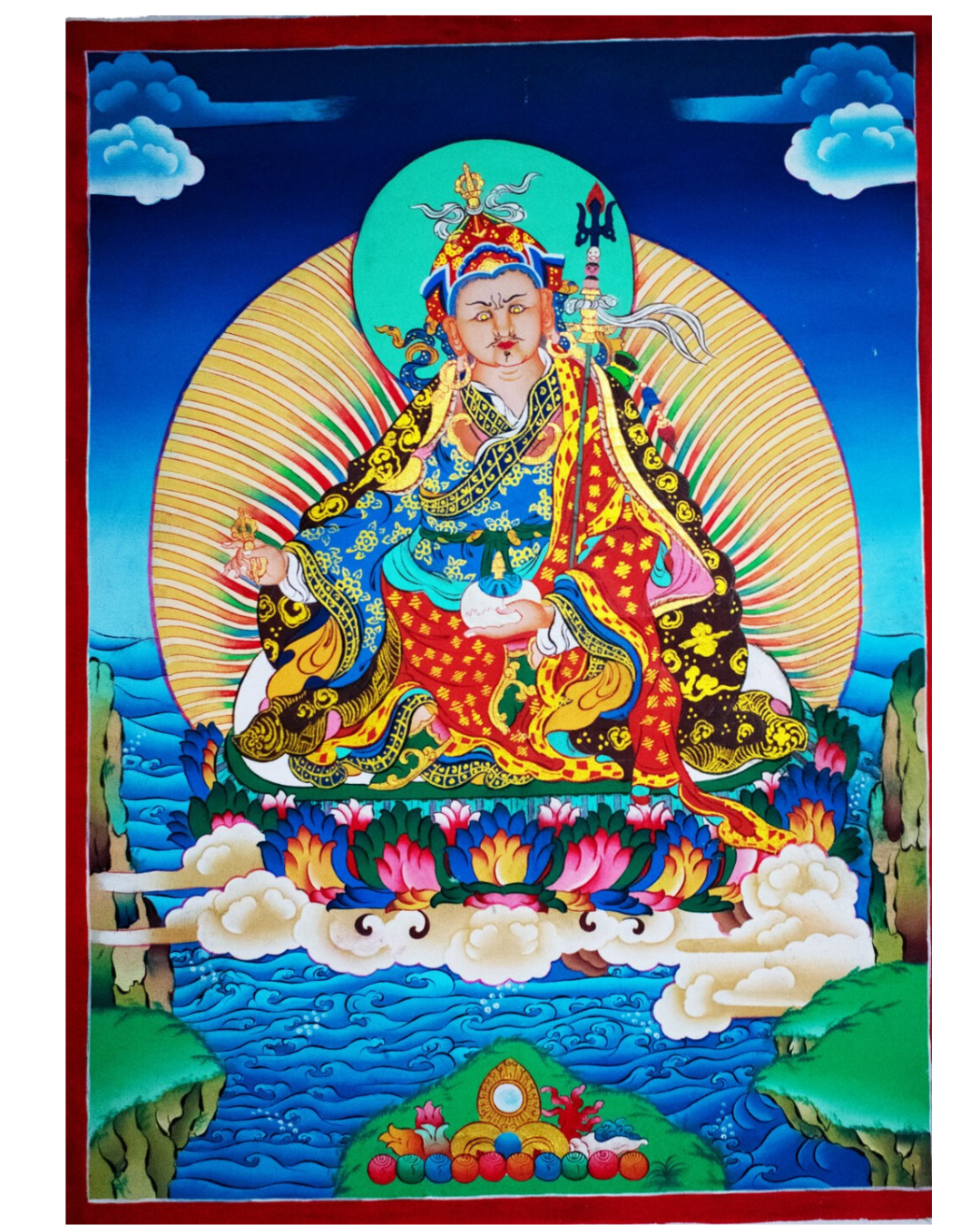Darjeeling Connection
Padmasambhava Thangka
Padmasambhava Thangka
Couldn't load pickup availability
This Thangka features Padmasambhava, also known as Guru Rinpoche, the legendary Buddhist mystic who introduced Tantric Buddhism to Tibet and who is credited with establishing the first Buddhist monastery there.
He is a highly revered figure in Tibetan Buddhism and is considered one of its most important saints and masters. His life and teachings have had a profound influence on the development of Tibetan Buddhism, and he is venerated as a second Buddha by many Tibetan Buddhists.
His name, Padmasambhava, was given to him as legend has it that he was found as a young child, 8 years of age, in the heart of a lotus on the Dhanakosha lake in the kingdom of Oddiyana (in what is now the Swat Valley of northern Pakistan) in the 8th century CE.
Those who are suffering from dasha-dosh and seek protection from maleficent grahas should meditate on this thangka. The Guru offers protection, removes obstacles and negativity.
Limited Availability: Due to the meticulous craftsmanship involved in creating each thangka, we have limited stock available. Don't miss the opportunity to own this exceptional work of art and spirituality
The Thangka will typically include the following elements:
Appearance: Padmasambhava is often depicted as a middle-aged or older figure with a peaceful and compassionate expression. He can have a variety of appearances, but he is commonly portrayed with a beard and long hair, wearing traditional Tibetan robes. His skin color can vary, but he is often depicted with a reddish complexion, symbolizing his ability to transform and purify negative energies.
Crown: He is usually depicted wearing a crown, often adorned with jewels and ornate decorations, symbolizing his enlightened status as a Buddhist master.
Mudra (Hand Gestures): Padmasambhava's hands may be in various mudras, each carrying specific meanings. The most common mudra is the Dharma teaching gesture (vitarka mudra), where the right hand is raised in the teaching position.
Attributes: He is often depicted holding various symbolic attributes, such as a vajra (thunderbolt) and a skull cup. The vajra symbolizes his mastery over spiritual and worldly obstacles, while the skull cup represents the transformation of ego and attachment into wisdom.
Lotus Seat: Padmasambhava is typically seated on a lotus or a throne, symbolizing his purity and enlightenment. The lotus is a symbol of purity that grows from the mud but remains untainted by it, reflecting the path to enlightenment.
Surrounded by Deities: In some Thangkas, Padmasambhava may be surrounded by a retinue of deities and enlightened beings, signifying his role as a tantric master and guru.
Mantras and Sanskrit Texts: Thangkas featuring Padmasambhava often include mantras or Sanskrit text written in Tibetan script, representing the sacred sounds and teachings associated with him.
Background: The background of the Thangka may depict a Himalayan landscape with mountains, rivers, and sacred places, as Padmasambhava is closely associated with the Himalayan region and its spiritual significance.
.
Care Instructions
Care Instructions
Materials
Materials
Specially treated cotton canvas; Paints are a mixture of acrylic, gold dust, and stone pigments
Dimensions
Dimensions
20.5 x 15.25 inch (l x b)
Country of Origin
Country of Origin
India


